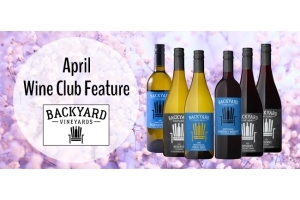Wine 101: Canadian Prohibition

While there’s widespread awareness of early-20th century Prohibition in the U.S., I always find it interesting that the Canadian version of it hardly ever gets a public mention.
Long story short(-ish), there were various runs at Prohibition in Canada towards the end of the 19th century and the beginning of the 20th. It was, as with the U.S., the Temperance movement that prompted things, spearheaded by the Dominion Alliance for the Total Suppression of the Liquor Traffic, a mostly Protestant group out of Ontario who rode in philosophical tandem with the Woman's Christian Temperance Union on a national level, but had various provincial branches. Their national mandate looked to halt importation and the manufacturing of alcohol, leaving the provincial arms to prevent its retail sale and public consumption.
The viewpoint of these organizations was that most crime, disease and social ills were all rooted in the consumption of alcohol, so eradicating it would obviously eliminate all of those issues.
SPOILER ALERT: It didn’t work.
There was 1964’s Canada Temperance Act that allowed various national counties to forbid the retail sale of liquor by majority vote, and then Parliament re-enacted it after Confederation, allowing municipalities to condemn its sale as well. After a federal referendum in 1898, 51.3 percent of voters voted in favour of Prohibition, though that was not reflected in Quebec where 81.2 percent of voters were against it.
Due to it being such a tight, polarizing issue – Prime Minister Wilfrid Laurier opted out of enforcing the vote’s outcome, instead leaving it to each province to decide for itself. As the provinces debated the merits and less-desirable outcomes of Prohibition, saloon-drinkin’ was prevalent in the early years of the 20th century as public and media commentary of the issues reached fever pitch.
Eventually, all of the provinces and territories succumbed to it in one way or another, with various nuances in their respective legalities, enforcement and exceptions.
There were many reasons why Prohibition failed, but the biggest ones were public dissent, the major difficulty of enforcing it, and -yup- it was unsuccessful in eliminating (or putting a dent in) the crime, disease and social ills mentioned earlier.
It was enacted and repealed at different times by the provinces, British Columbia held it from 1917 to 1921, Nova Scotia hit the booze brakes from 1921 to 1929, P.E.I. had quite the stretch from 1901 to 1948, whereas Quebec only had full Prohibition (spirits, beer and wine) for only a few months before starting to turn things around.
Happily, from coast to coast, most of us can now clink glasses to celebrate Prohibition being a thing of the past.
For more reading on Canadian Prohibition, check out The Canadian Encyclopedia or Wikipedia’s page on the subject.
Kurtis Kolt is a Vancouver-based wine consultant, writer, competition judge and enthusiast. He’s not half as fancy/boring as that sounds. He Tweets and Instagrams @KurtisKolt.





